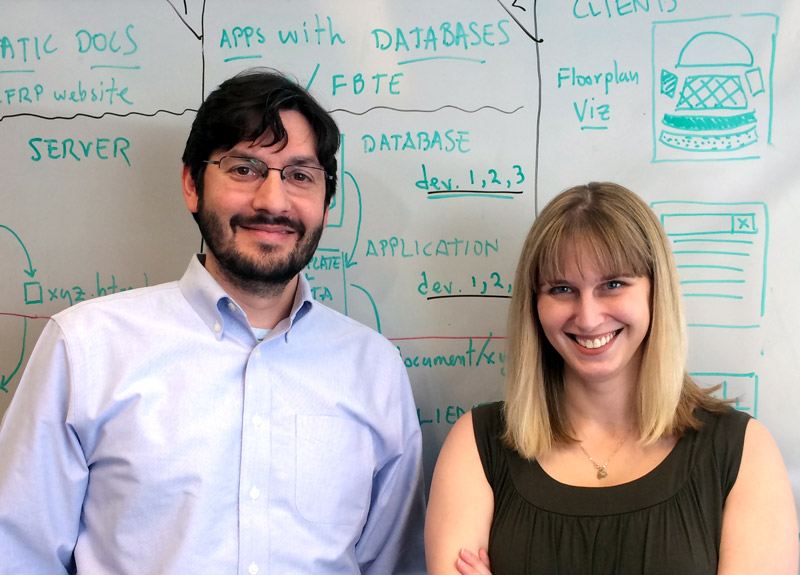Better Humanities through Digital Annotation

Some educators have decried the use of digital tools, suggesting they are a detriment to reading and learning. It’s easy for students to click through a website to find answers without thinking deeply about the content, for example. But Bert Lott, professor of Greek and Roman studies, is using a digital annotation tool as a way to slow students down, to get them not only to engage more deeply with difficult texts, but with each other in a collaborative learning environment. (See “Distracted Reading in the Digital Age.”)
Lott, who teaches Latin, uses Annotation Studio, an application developed by HyperStudio, an MIT research lab devoted to creating “new media technologies for the enhancement of education and research in the humanities.”
He asks students to read a digital text within the application and to make annotations about grammar, syntax, and lexicography. Mainly, these are interpretive comments or questions. Students respond to one another or add new observations, and Lott often chimes in, too.” Much of this exploration is done before class, so students enter the classroom with more fully formed thoughts, says Lott.
Annotation Studio is one of the few digital annotation platforms created specifically for use in academia, and it has been used not just in language study, but in disciplines as varied as literature, history, and cultural studies.
One reason for its popularity, says Annotation Studio’s web applications developer, Jamie Folsom ’92, is that the team has been intent on making Annotation Studio as flexible as possible. “We’ve carefully focused on keeping the tool itself very simple, both because we don’t want it to be a distraction, to pull a person’s attention from the activity for which it’s intended, but also because we want to avoid prescribing or presuming any one pedagogy. We allow the instructor’s approach to drive the tool in the classroom.”
Annotation Studio has evolved over several versions based on feedback from a wide range of faculty member-users at MIT and outside institutions, including Vassar. Rachel Schnepper ’02, communications officer for Annotation Studio, along with the head of the HyperStudio research lab, Kurt Fendt, spend a great deal of time researching how the tool is being used for pedagogical purposes and determining what users want to see next.
Schnepper says she’s been “truly amazed” by the multitude of uses that instructors across disciplines have found for the application. “One of the things that really blew my mind is the collaborative and social uses,” she says. “We have this Ivory Tower notion of people sitting alone in a library reading, doing all of their deep thinking by themselves. One of the things Annotation Studio does is to allow you to collaborate with other readers from a distance and to share your analyses, your ideas, and your interpretations with each other. So it creates this elaborate environment for knowledge creation, where the users of Annotation Studio are all reading the same text and learning from each other, not just from their professor or instructor.”
Schnepper offers an example of the application’s use in an MIT class on the Bible. “So, you have students who already have an incredible knowledge about the Bible going into the class,” says the Vassar religion major. “They’re able to share that knowledge with other students. Someone might see a passage in one of the Synoptic Gospels and say, ‘This is a direct quotation from Isaiah.’ The other students may not have known that, but they can see that Mark is quoting Isaiah in order to have a fulfillment prophesy of Jesus.”
Annotation Studio also fosters a less apparent form of collaboration. Folsom, who majored in French as an undergraduate, notes that Annotation Studio is funded by an implementation grant from the NEH Office of Digital Humanities that requires that the software be open source. “In other words, anyone can take the code and run the application him- or herself,” says Folsom. “By virtue of being an open source tool, and incorporating other open source software into its code base, Annotation Studio has become a project that allows participation by coders and practitioners outside of our team.” Part of Folsom’s role has been to communicate with those developers and coordinate their contributions.
It’s clear that digital tools are transforming learning. HyperStudio’s researchers are hoping to smooth the transition. “Students are now coming into classes with digital media skills—they’re living their lives on the Internet. There’s nothing new and groundbreaking about that,” says Schnepper. “But for far too long there has been an antagonism between old and new media literacy. The thinking has been that students are supposed to go to the library and read books; you can look stuff up on the Internet, but that doesn't really count because it’s not as good. But what Annotation Studio enables instructors to see is that there’s so much that students can learn within a digital environment, that it’s not a case of either/or, not a case of fighting with traditional humanistic learning environments; rather, it’s an attempt to incorporate these new elements into them so they can work together.”
